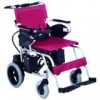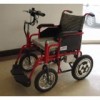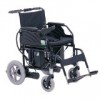列斯特大学(University of Leicester)的科学家发现了两个与乳癌治疗相关的基因,能够解释为何有些人对于放射线治疗的效果很差,达到预先警告的目的,以争取时间寻求其它种治疗方法。这是第一份对放射治疗异常反应作出的完整研究。由Drs Paul Symonds以及Mark Plumb等科学家联合完成,研究成果发表于British Journal of Cancer期刊。
Dr Symonds说:「放射线治疗是乳癌治疗很重要的一环,但却有少部份的人会有很严重的副作用。」在进行放射线治疗时,病人的皮肤会发红或脱皮,乳房会皱缩,皮肤底下的组织会变硬、变厚或纤维化。研究人员详细诊察这些病人后,发现有两个基因与上述征状有强烈的关系。
Dr. Symonds说:「大约有8%的妇女带有组织纤维化基因(fibrosis gene),而有长期慢性疼痛的人其组织纤维化的风险更比一般人高出15倍,而被鉴定出来的这两个基因就是乳癌疼痛的标记,大约有50~60%的预测值,若能同时再找出造成皮肤发红或脱皮的基因,那么就能将预测值提高到100%。未来也许能透过这些指标基因,来预测那些人对放射线治疗是不适合的,而对于那些只能选择放射性治疗的人,也能预告该病人是否会有组织纤维化的风险。」
(编译/陈瑞娟) (资料来源 : Bio.com)
英文原文链接:
原始出处:
Genetics and Genomics
British Journal of Cancer (2007) 96, 1001-1007.
doi:10.1038/sj.bjc.6603637 Published online 27 February 2007
The late radiotherapy normal tissue injury phenotypes of telangiectasia, fibrosis and atrophy in breast cancer patients have distinct genotype-dependent causes
G Giotopoulos1, R P Symonds2, K Foweraker2, M Griffin3, I Peat2, A Osman2 and M Plumb1
1Department of Genetics, University of Leicester, Leicester LE1 7RH, UK
2Department of Cancer Studies and Molecular Medicine, University of Leicester, Level 2, Osborne Building, Leicester Royal Infirmary, Leicester LE1 5WW, UK
3Department of Oncology, Nottingham University Hospitals NHS Trust, CITY Hospital Campus, ICT Services, Hucknall Road, Nottingham, UK
Correspondence to: Dr RP Symonds, E-mail: rps8@le.ac.uk
Received 15 November 2006; revised 19 January 2007; accepted 23 January 2007; published online 27 February 2007
Abstract
The relationship between late normal tissue radiation injury phenotypes in 167 breast cancer patients treated with radiotherapy and: (i) radiotherapy dose (boost); (ii) an early acute radiation reaction and (iii) genetic background was examined. Patients were genotyped at single nucleotide polymorphisms (SNPs) in eight candidate genes. An early acute reaction to radiation and/or the inheritance of the transforming growth factor-1 (TGF1 -509T) SNP contributed to the risk of fibrosis. In contrast, an additional 15 Gy electron boost and/or the inheritance of X-ray repair cross-complementing 1 (XRCC1) (R399Q) SNP contributed to the risk of telangiectasia. Although fibrosis, telangiectasia and atrophy, all contribute to late radiation injury, the data suggest that they have distinct underlying genetic and radiobiological causes. Fibrosis risk is associated with an inflammatory response (an acute reaction and/or TGF1), whereas telangiectasia is associated with vascular endothelial cell damage (boost and/or XRCC1). Atrophy is associated with an acute response, but the genetic predisposing factors that determine the risk of an acute response or atrophy have yet to be identified. A combined analysis of two UK breast cancer patient studies shows that 8% of patients are homozygous (TT) for the TGF1 (C-509T) variant allele and have a 15-fold increased risk of fibrosis following radiotherapy (95% confidence interval: 3.76-60.3; P=0.000003) compared with (CC) homozygotes.
Keywords: breast cancer; radiation injury; TGF1; XRCC1; fibrosis; telangiectasia







